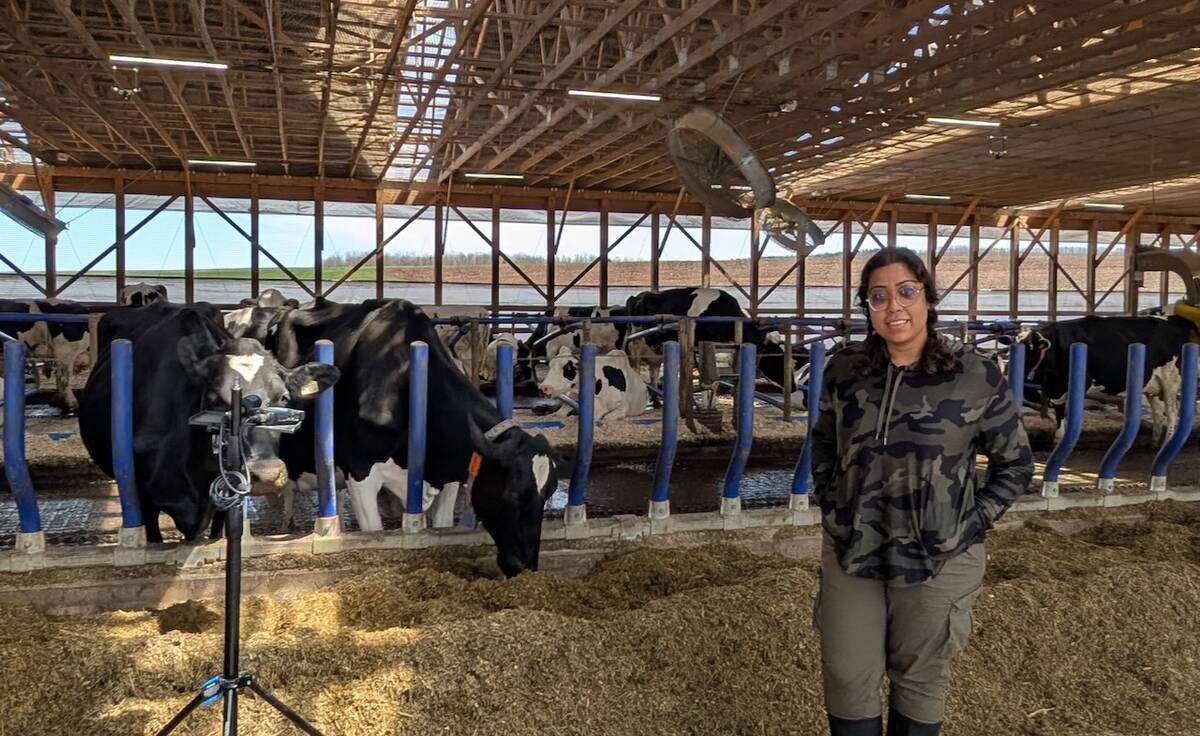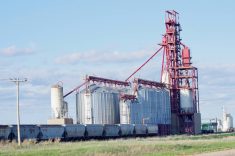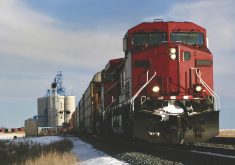Glacier FarmMedia – After a brutal few months of being unable to meet the shipping demands of grain companies, the two major railways have largely caught up.
“Over the last two or three weeks, it’s got a little bit better,” Mark Hemmes, of Quorum Corp. (the federal grain monitor) said earlier this month.
“We probably have less grain left to ship now, than I can ever remember having left to ship this time of year.”
Read Also

Moo translator and methane measures: There’s an app for that
Dalhousie University researchers use artificial intelligence to create new dairy farm apps that analyze cattle sounds and measure methane.
The StatCan estimate for grain stocks was (as of March 31) just over 12 million tonnes.
“Normally, at this time of year, we’d probably have almost 30 million tonnes,” Hemmes said. “So this volume of grain has basically got to keep us going until the end of August.”
That means there’s not likely to be any grain transport issues in the coming months but the story could change come autumn.
“If we have what equates to a normal crop this fall, there are a lot of people concerned that the railways won’t be prepared to move it,” he said. “And I think that the people have got a right to be concerned.”
One potential issue is labour, particularly with CN Rail, which laid off workers in anticipation of last year’s small crop and hasn’t laid out its plans for the coming year.
“Everybody knows that there’s an issue with rail service,” said Hemmes. “While CP has been a lot more up front about what it plans to do and how it’s dealing with it, we haven’t heard anything from CN yet.”
In an emailed statement, CN indicated it is gearing up for business as usual. The statement said the company recognizes “the importance of being ready for a return to normal crop production. Our 2022-23 grain plan will reflect that commitment.”
But that’s no comfort to Wade Sobkowich, executive director of the Western Grain Elevator Association.
He said CN’s grain plan last year stated the company would provide 5,350 rail cars per week. But Sobkowich pointed to one week in February when grain companies requested just 1,240 rail cars.
“CN provided in that week just 550 rail cars — just a fraction of what CN said it was going to do,” Sobkowich said.
One problem faced by companies that ship commodities such as pulses hasn’t been fixed — shipping containers remain scarce and expensive.
“The global container system is totally out of sync. It’s lost its ability to have a consistent cycle,” he said.
Moreover, there’s a limited number of container rail cars in the North American fleet.
“So what each railway had at the beginning of 2020 is what they’ve got now,” said Hemmes. “So what they’re trying to do is move a phenomenally higher volume of containers with the same resources that they had in 2020, and that’s problematic.
“The only way that they can achieve that additional capacity is by moving faster. And everything that’s happened to the railway since November basically flies in the face of any kind of attempt that they can make to move faster. And that’s largely why we’re not digging out of this.”
The problem is baked into the system, said Sobkowich.
His association recently asked — unsuccessfully — the Canadian Transportation Agency to investigate the railways’ poor record on delivering rail cars this winter.
“If this was a normal year from across volume point of view, it would have been an absolute catastrophe,” Sobkowich said. “So what does that mean for the fall? What does that mean for next winter?”
The grain sector will pay a heavy price if the problem isn’t addressed, he said.
“We’re looking at severe costs, reputational damage to the grain industry and in our inability to deliver on sales made during the peak price periods, which is in the fall and winter.”
It’s the system, not the railways, that’s the problem, said Sobkowich.
“The railways are only behaving in a predictable way under the current regulatory and competitive environment,” he said, noting farmers basically have no choice but to ship their grain by rail.
“The railways know that and they know that, that crop is there and they will get to it eventually. And so they can put us at the back of the line when it comes to setting shipping priority.”
That’s why meaningful regulations are needed, he said.
“The railways should be obligated to put on enough capacity so that all sectors that require shipping get what they need,” said Sobkowich.
The situation is tenuous, said Hemmes.
“As farmers head out into the fields and they’re starting their seeding right now, one has to wonder what we’re going to be looking at when it comes to the fall,” Hemmes said. “Will the railways have enough people back in position in order to man trains and get the capacity back to where it was two years ago?”
– This article was originally published at the Manitoba Co-operator.















